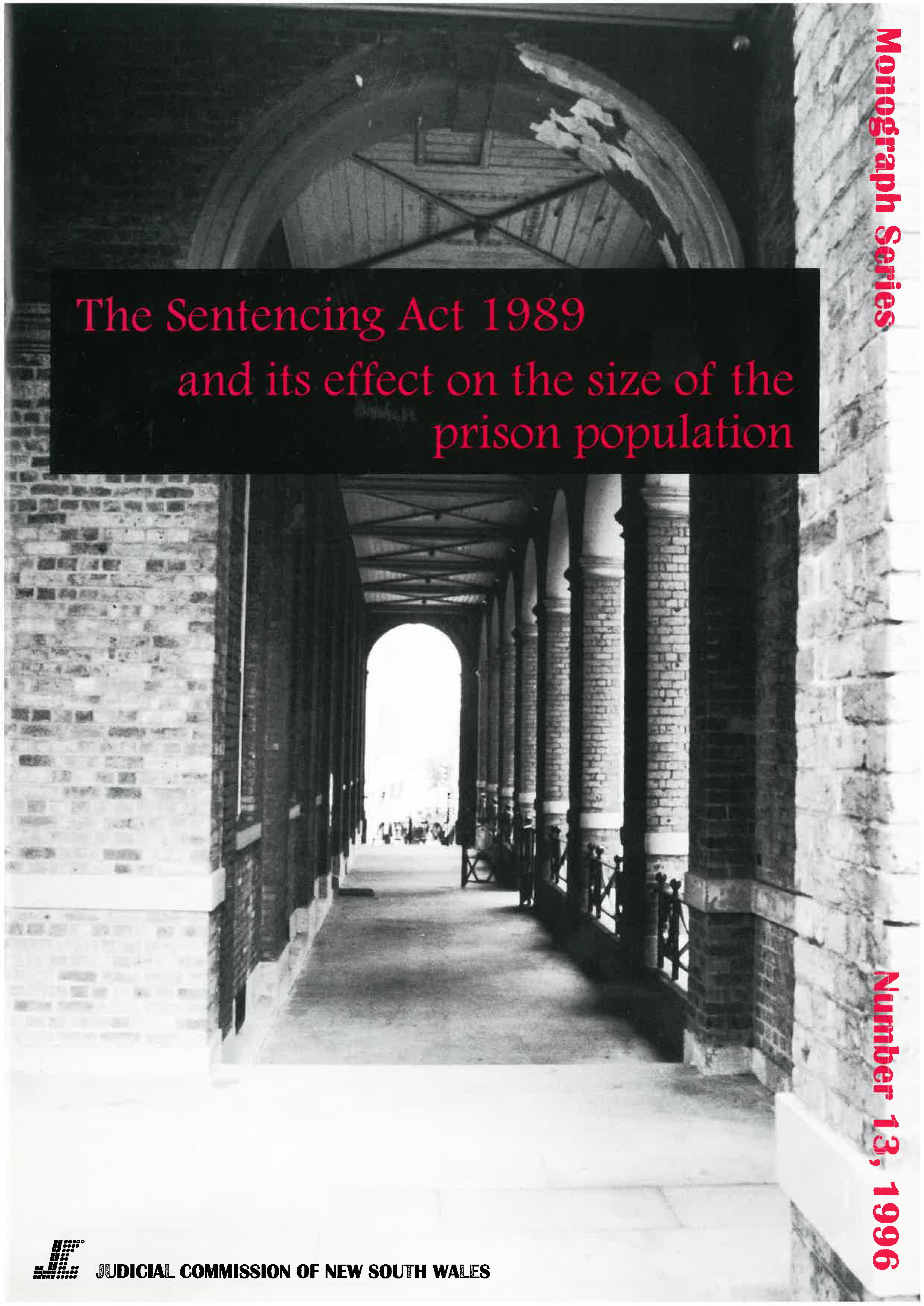
Paperback, 28 pp, 1996, ISBN 0 7310 88778
The Sentencing Act 1989 (the “Act”) was a landmark piece of legislation in the area of sentencing. It has been widely assumed, although it is empirically difficult to prove, that the Act has had a significant effect on the size of the prison population.
The findings of this monograph may be summarised as follows:
- the Act came into effect on 25 September 1989 — it abolished the system of remissions that had existed in New South Wales since colonial times, whereby most prisoners were released before the expiration of the sentence imposed by the sentencing court;
- the size of any prison population is a function of both rate of entry and length of stay;
- between 1988-1989 and 1993-1994, the daily average population of full time prisoners in New South Wales rose by 47.4%;
- the total cleared crime rate (calculated per 100,000 population) rose steadily between 1981 and 1990, but has been relatively stable since 1990;
- the remand population has fallen as a proportion of the total prison population, from a high of 15.5% in 1988 to a low of 9.2% in 1995;
- sentenced reception numbers are heavily influenced by changes in the practice of imprisoning fine defaulters;
- the daily average full time prison population is not significantly affected by the fluctuating population of fine defaulters;
- the number of offenders being sentenced to full time custody has dropped from 7,603 prisoners in 1991-1992 to 7,121 in 1994-1995, reflecting a decrease in the number of cases finalised each year across the jurisdictions;
- between 1990 and 1995, an underlying pattern of very limited growth followed by a gradual fall in the number of persons being sentenced to full time custody is apparent;
- the number of sentenced offenders entering full time custody has not changed significantly since 1982 and has fallen steadily since 1991-1992;
- although the number of sentenced prisoners entering gaol has declined since the late 1980s, the population within the prison system has actually increased;
- the median length of sentences imposed by courts was greater in the 1980s than in the early 1990s;
- the average length of sentences imposed by the courts has not changed significantly since 1990;
- the net effect of these changes since 1990 has been to increase the average “real time” that prisoners spend in gaol.
There are a number of factors which led to an increase in the average “real time” each prisoner spends in full time custody. In New South Wales, the most commonly cited factor for recent rises in the size of the prison population is, the abolition of remissions in 1989, without any corresponding reduction in the maximum penalties available for each offence. Another aspect of the Act, the fixing of terms of less than six months, may also have caused an increase in the average “real time” spent in gaol.
The effect of the Sentencing Act 1989 on the prison population can be considered as one aspect of a general pattern of policies which aimed to increase the time spent by “serious” offenders in gaol. Although the abolition of remissions was probably one of the factors responsible for the increase in the average “real time” spent by prisoners in custody, it is certainly not the only factor behind the recent increases in the prison population.










